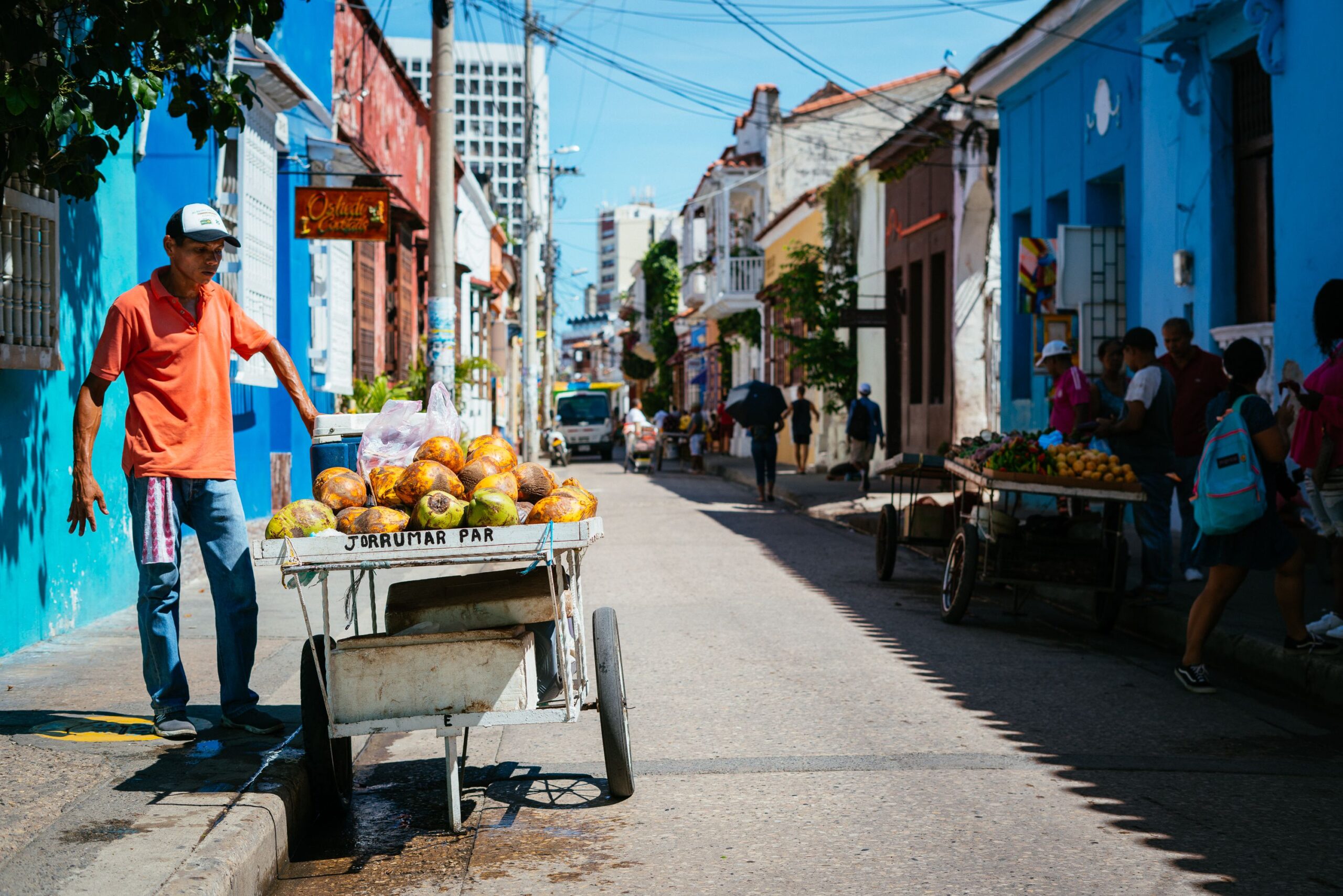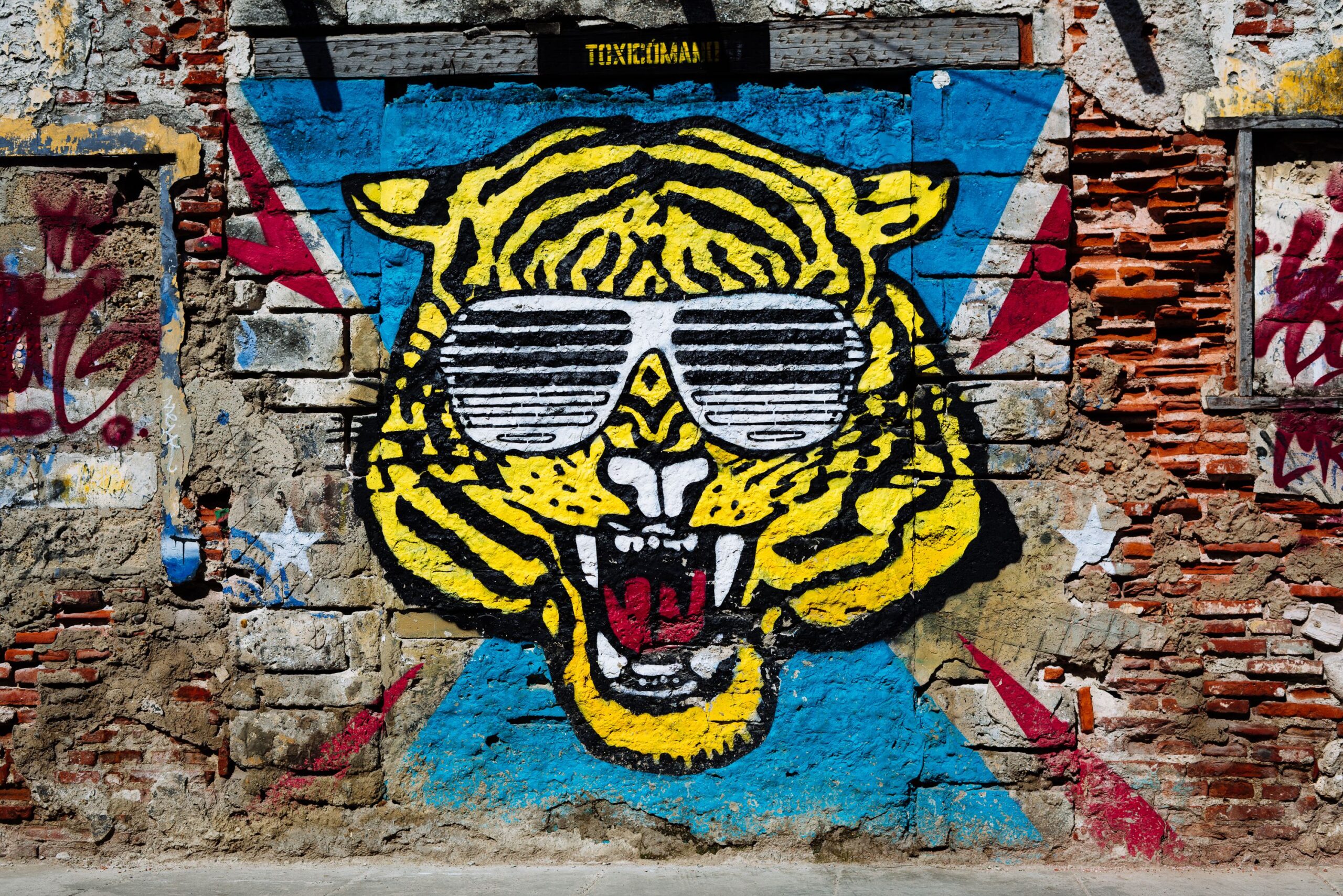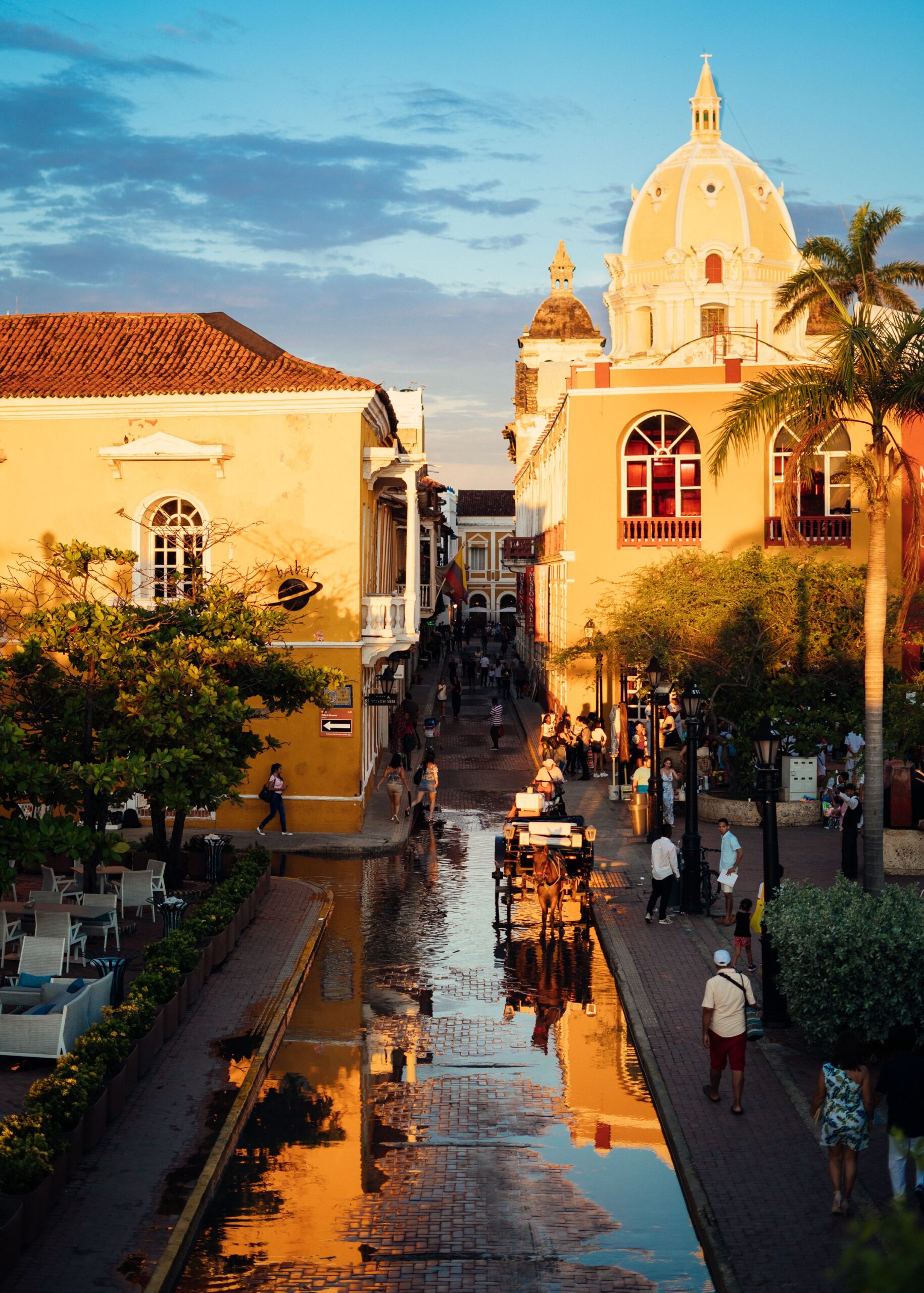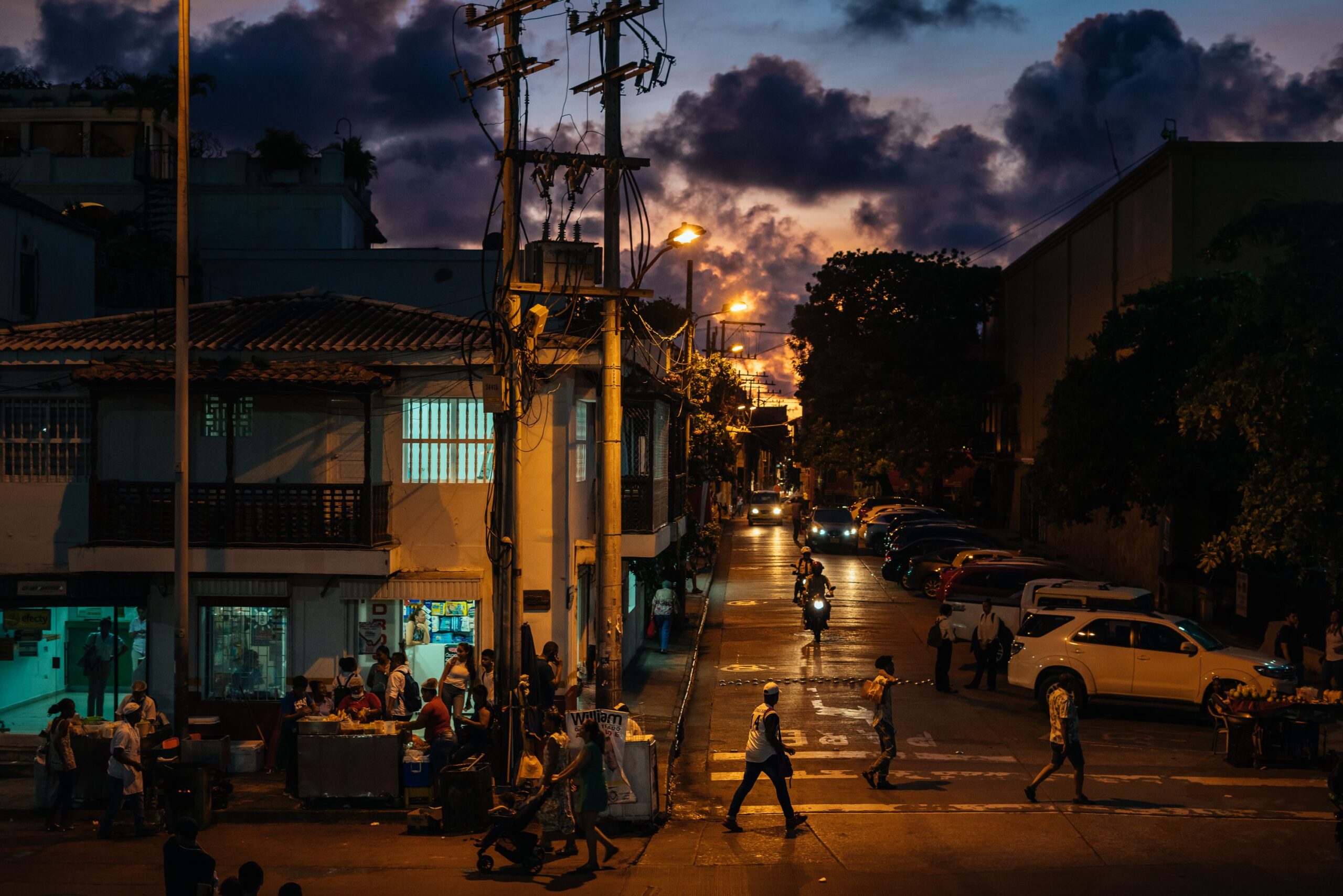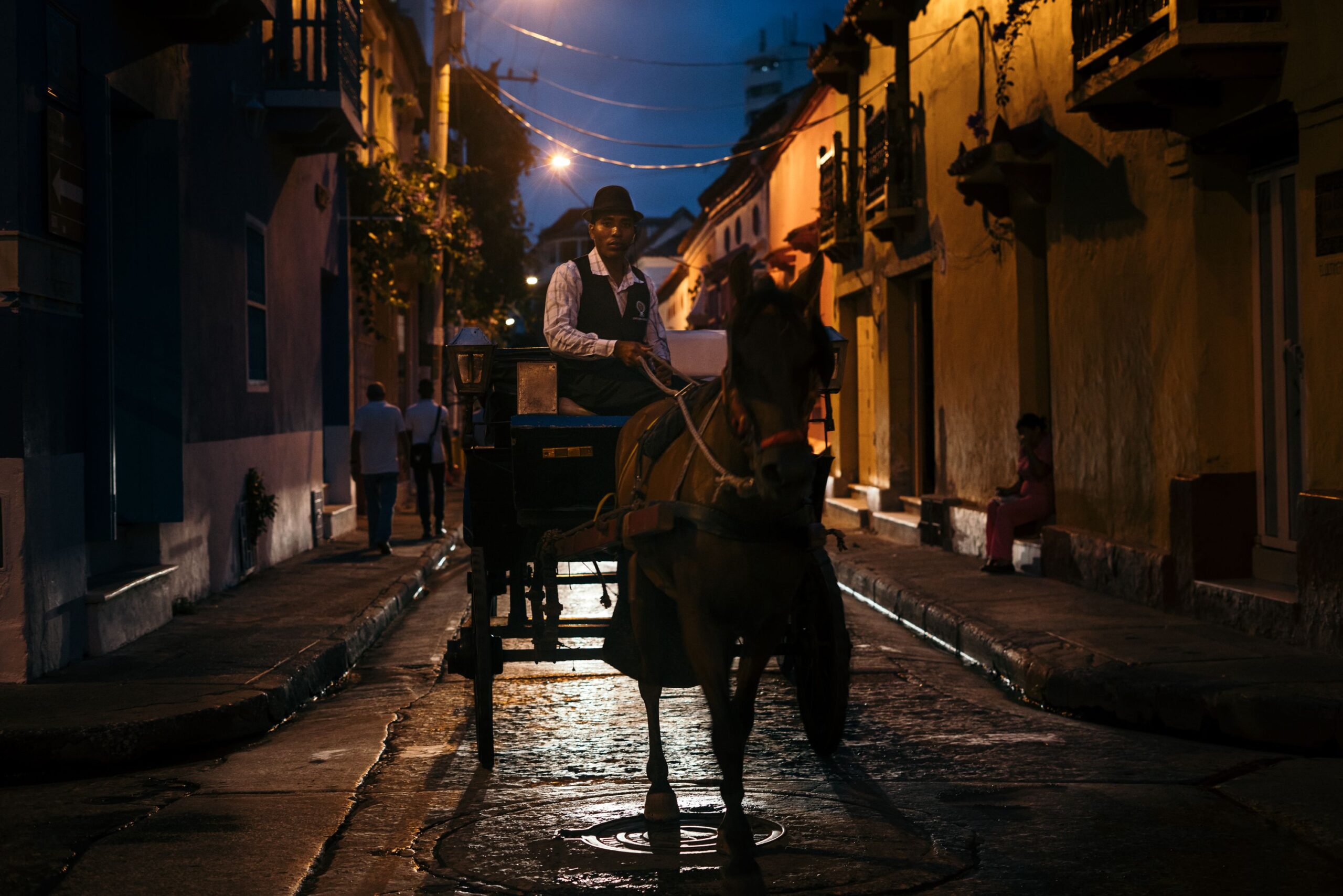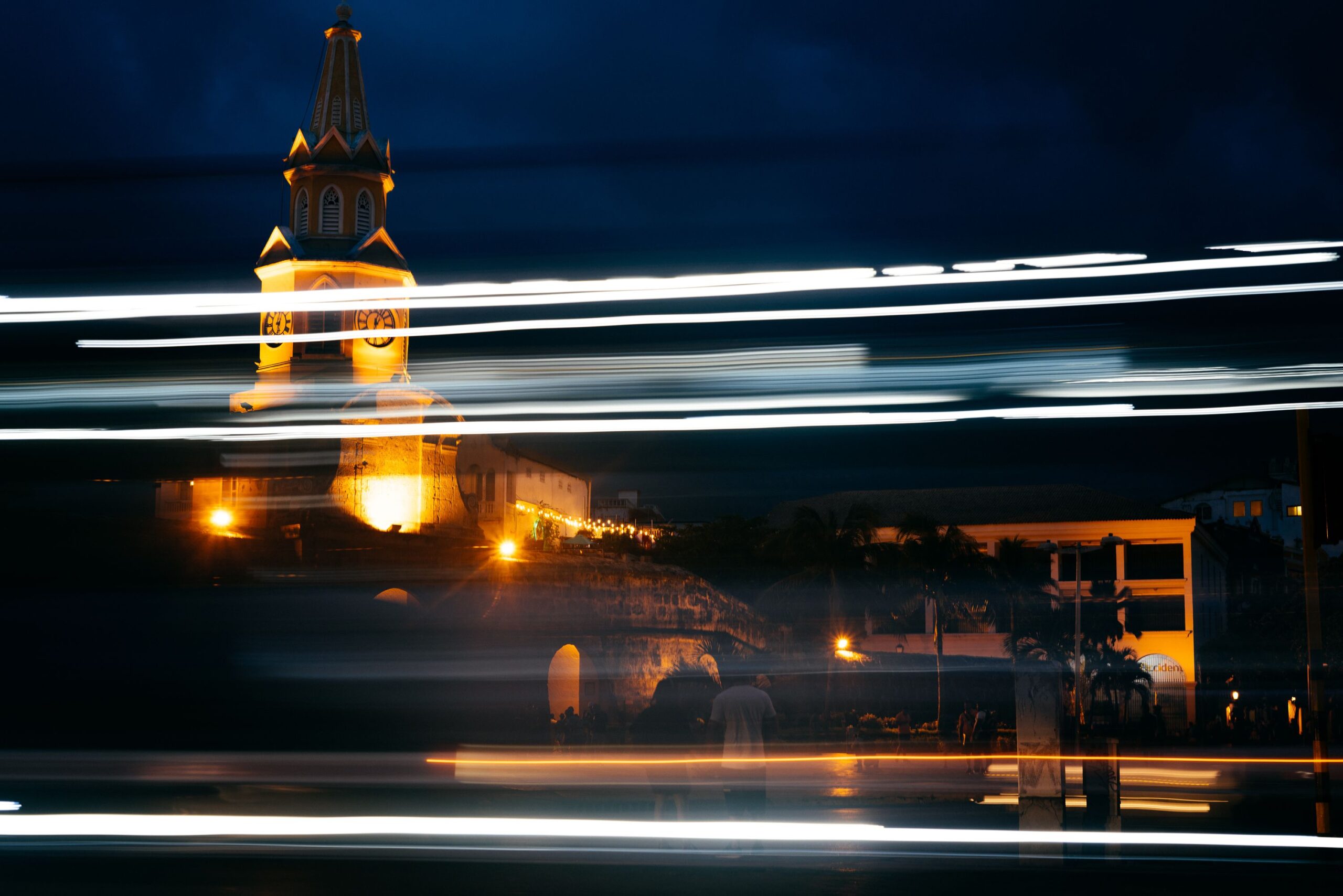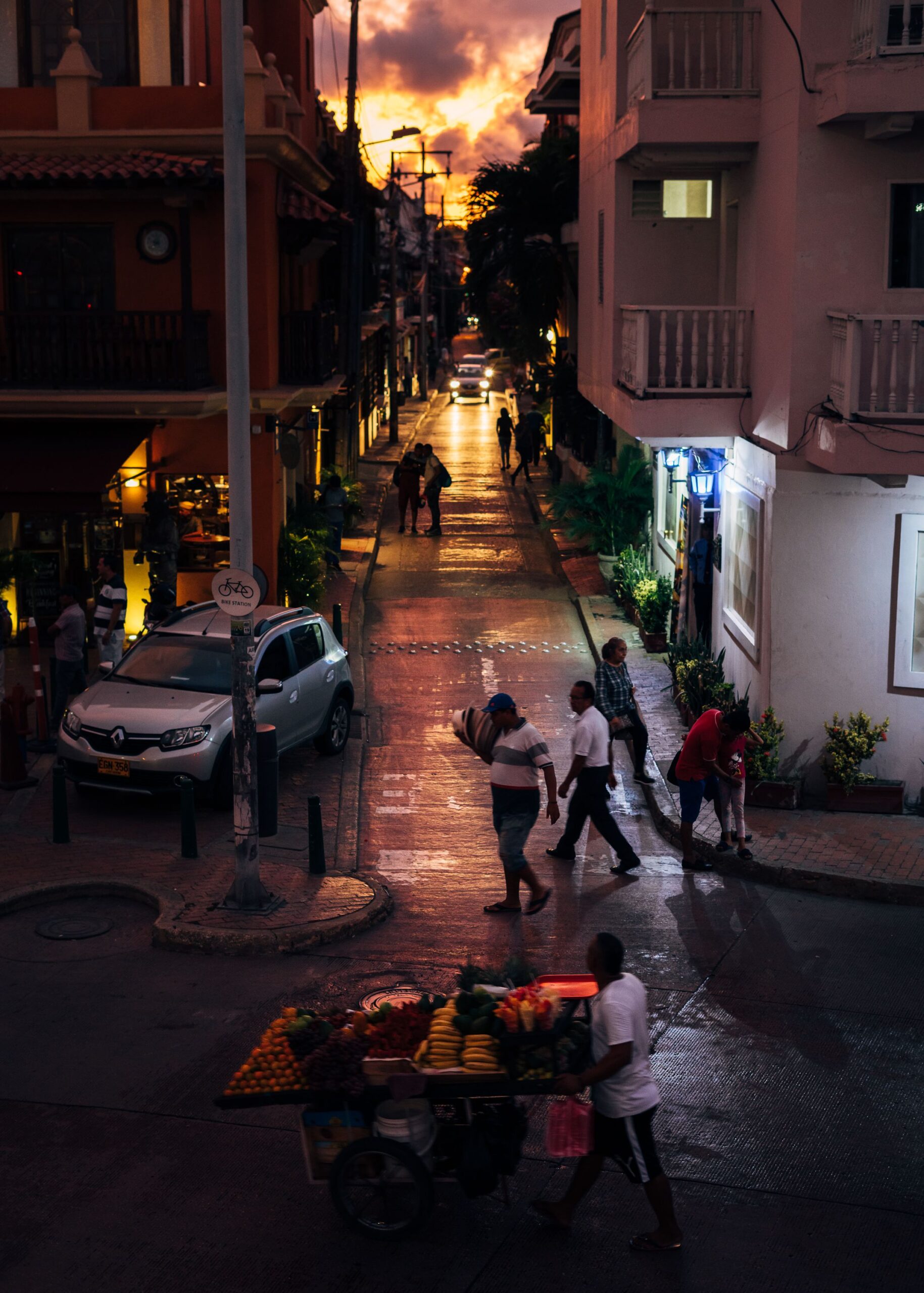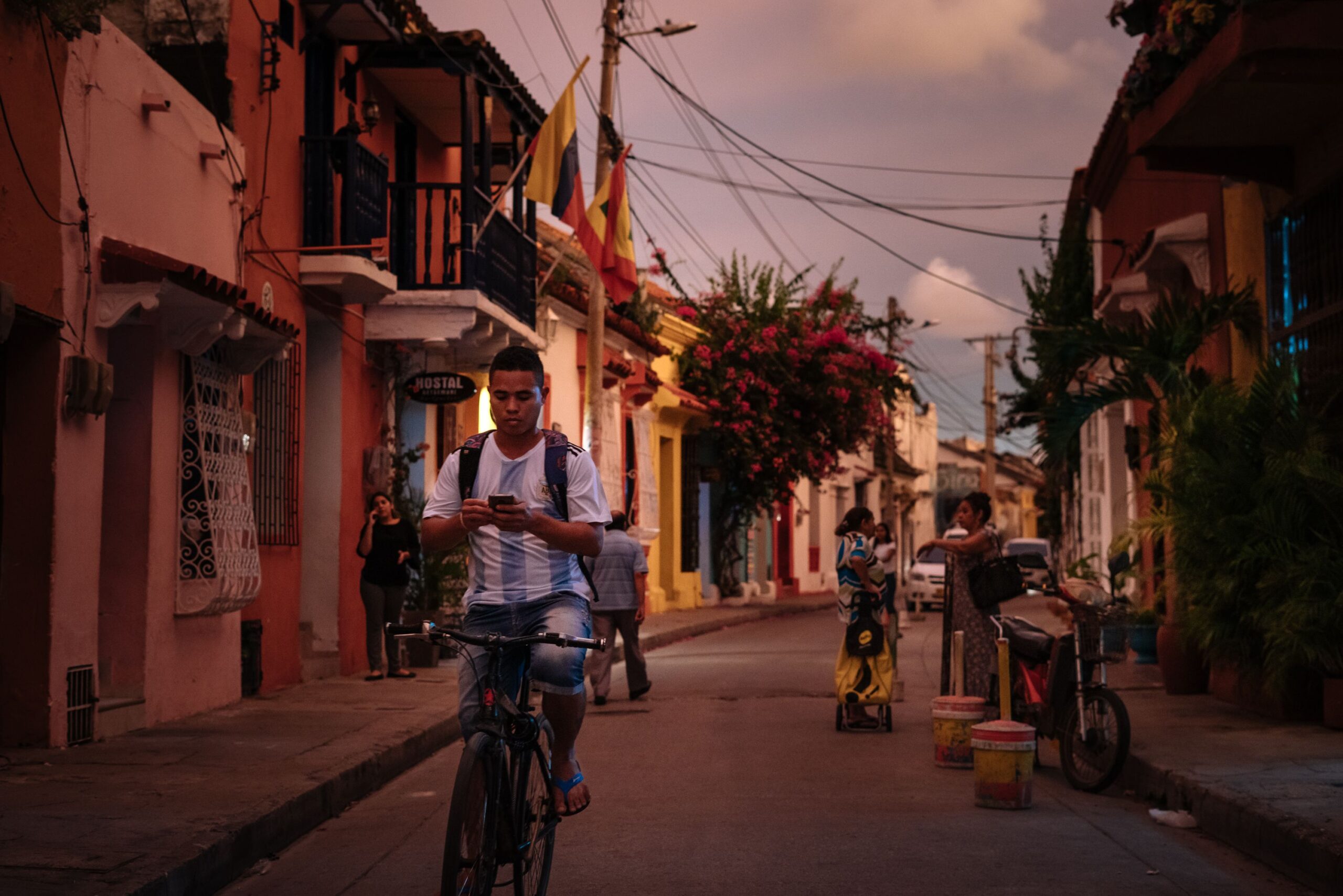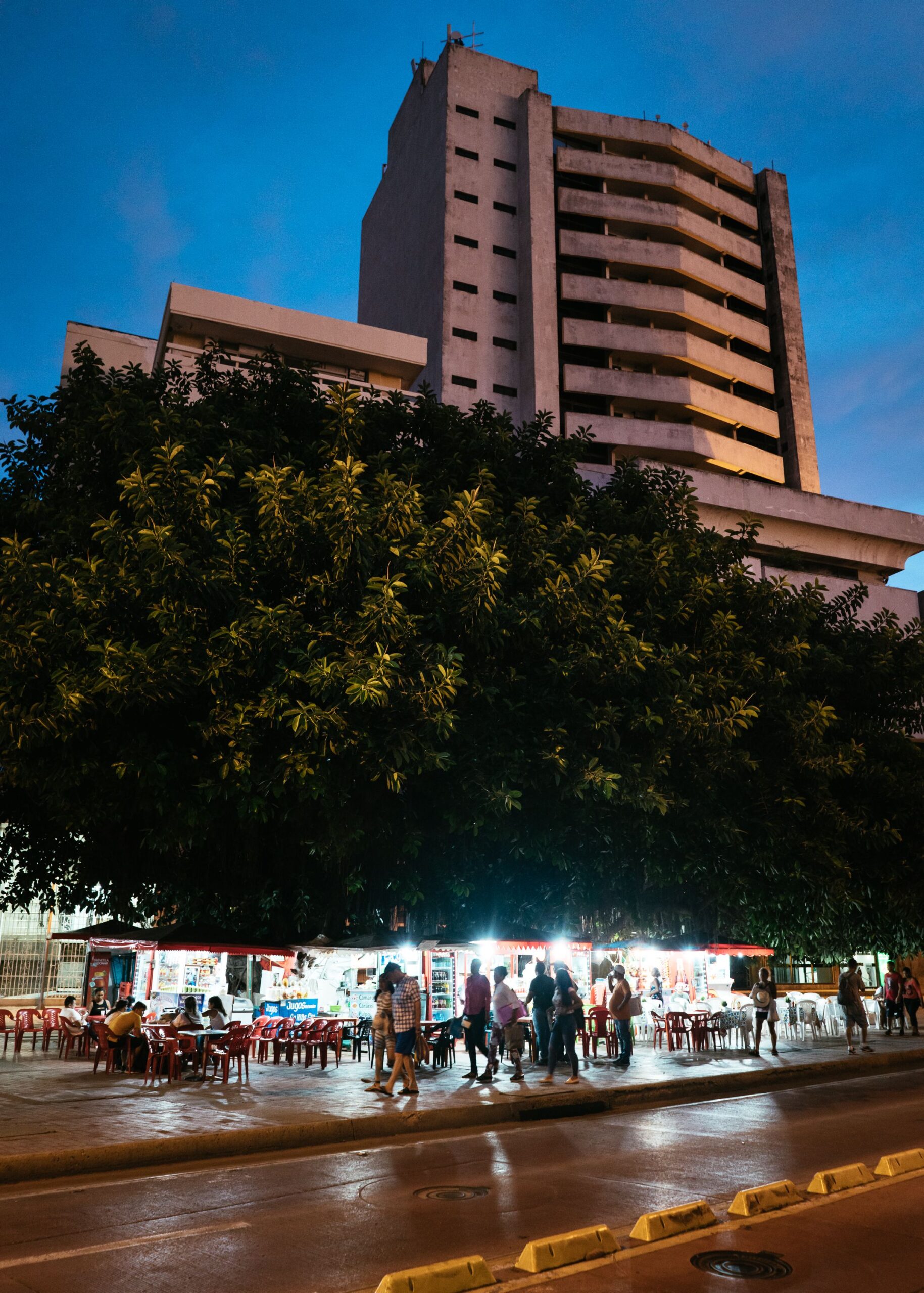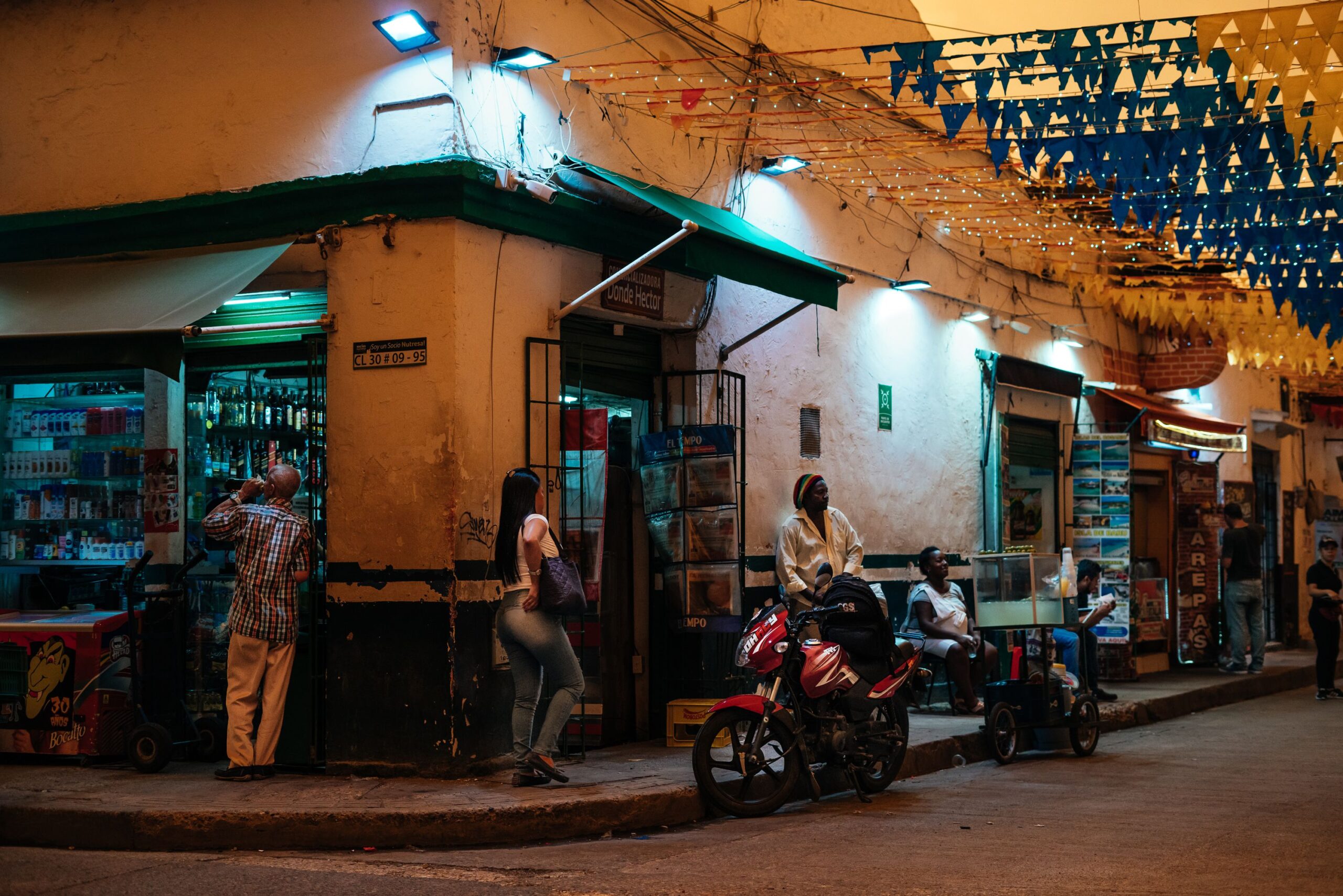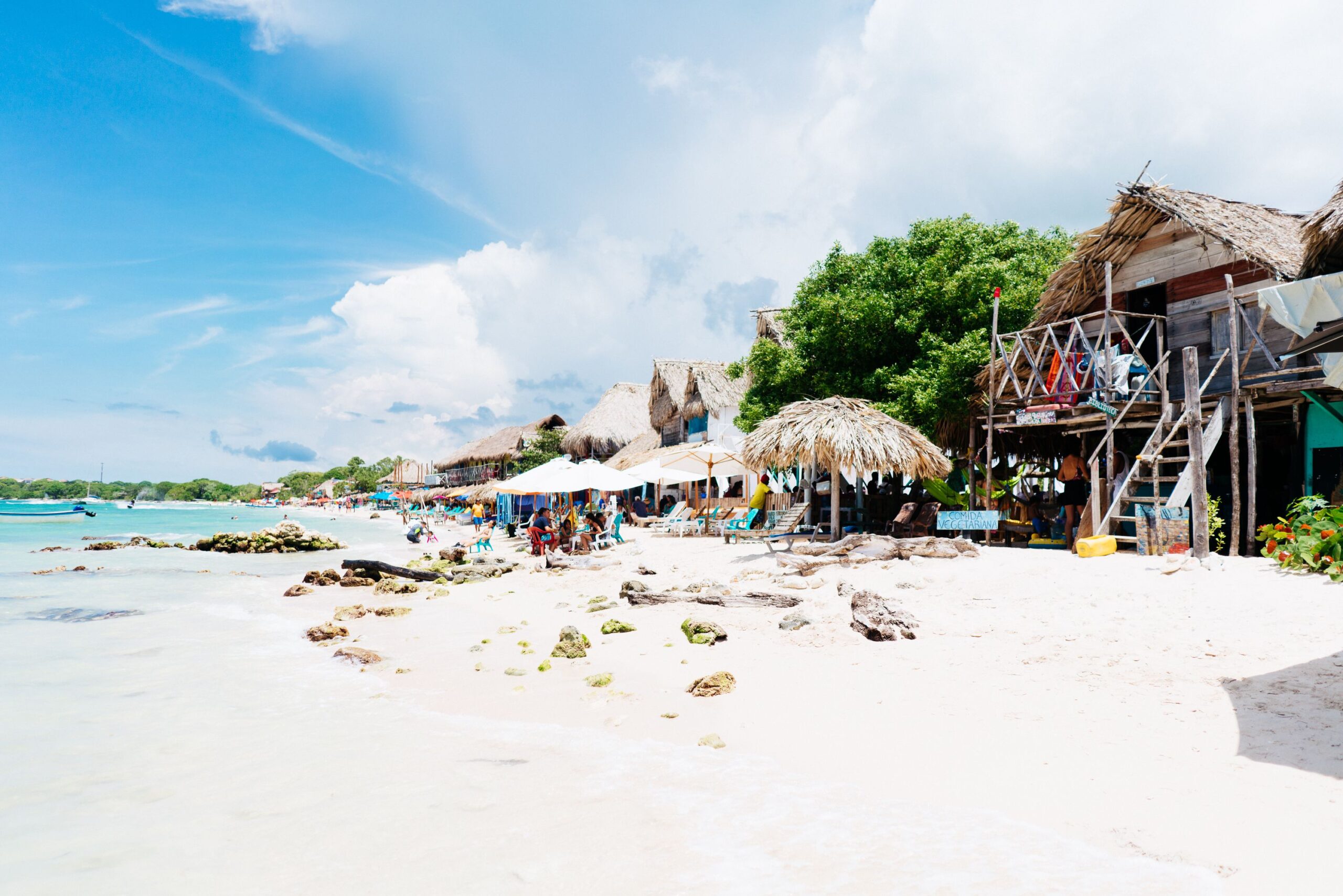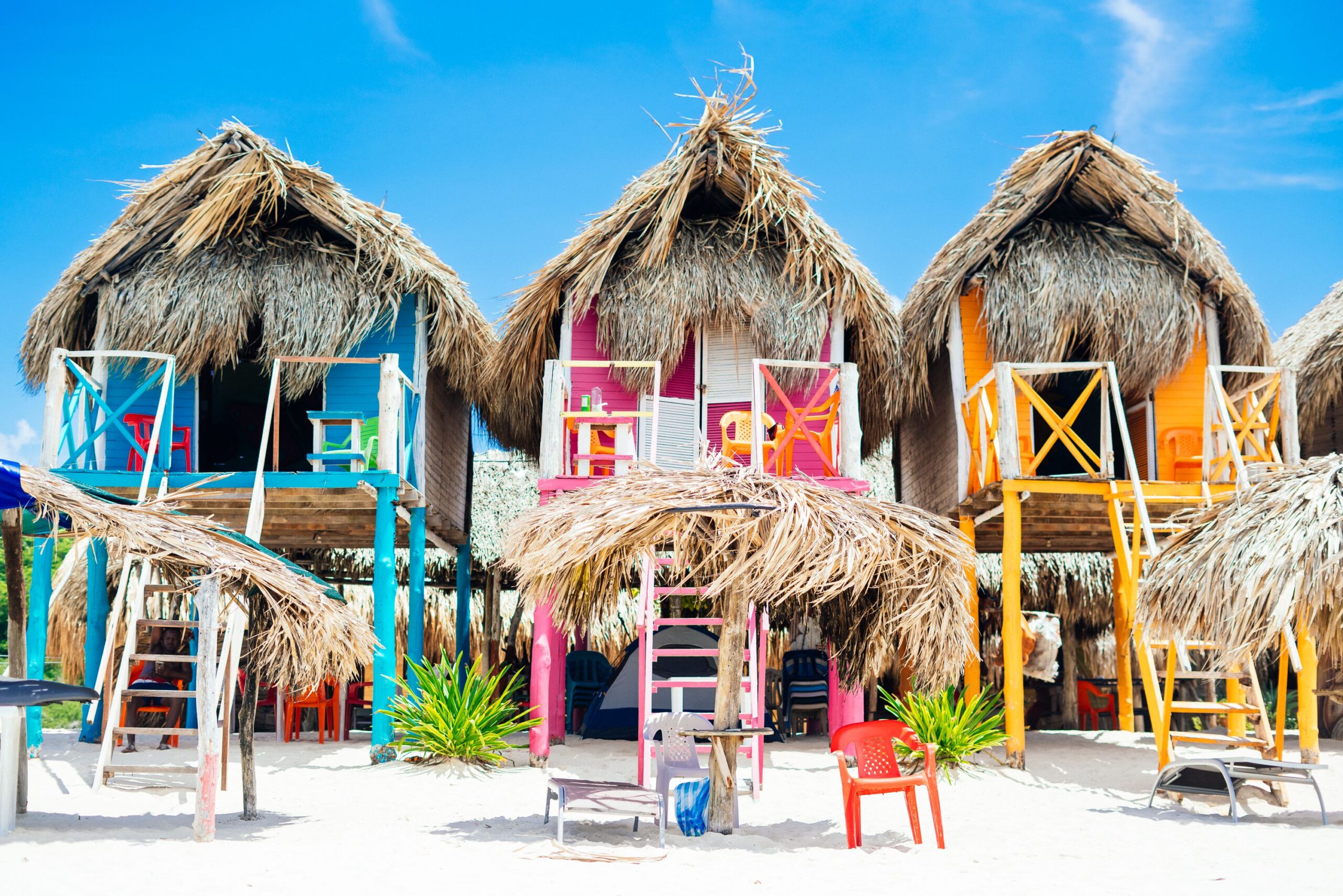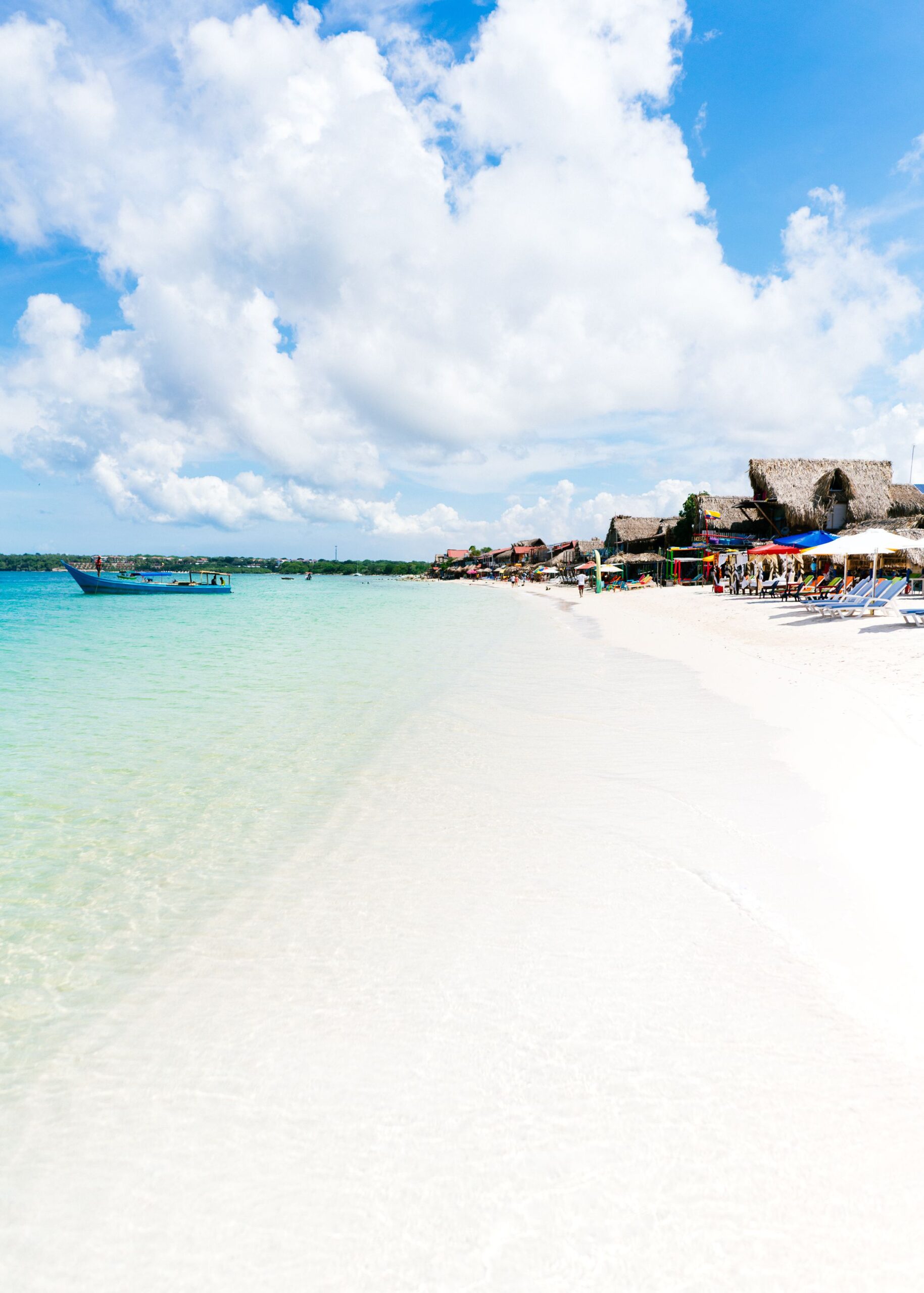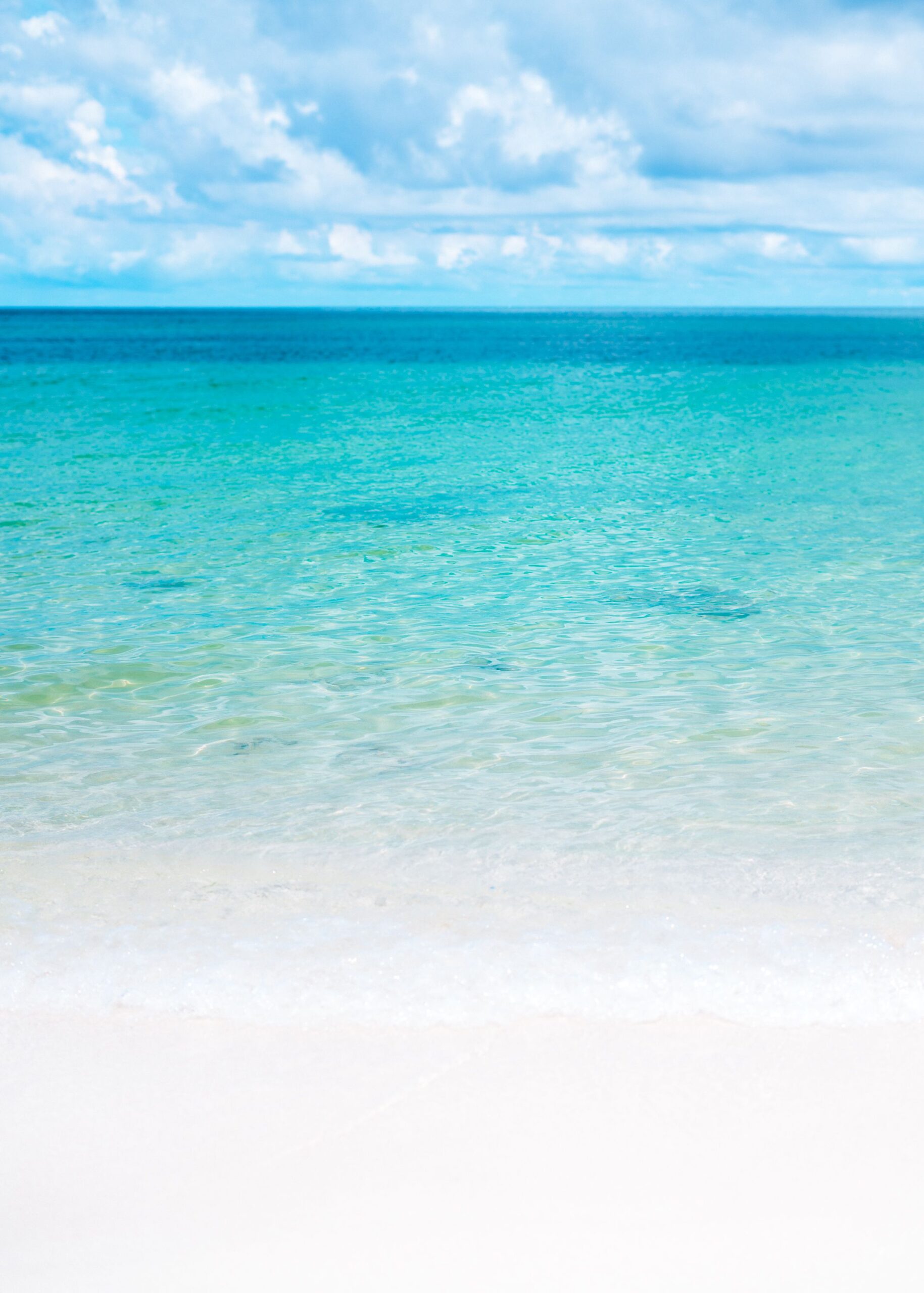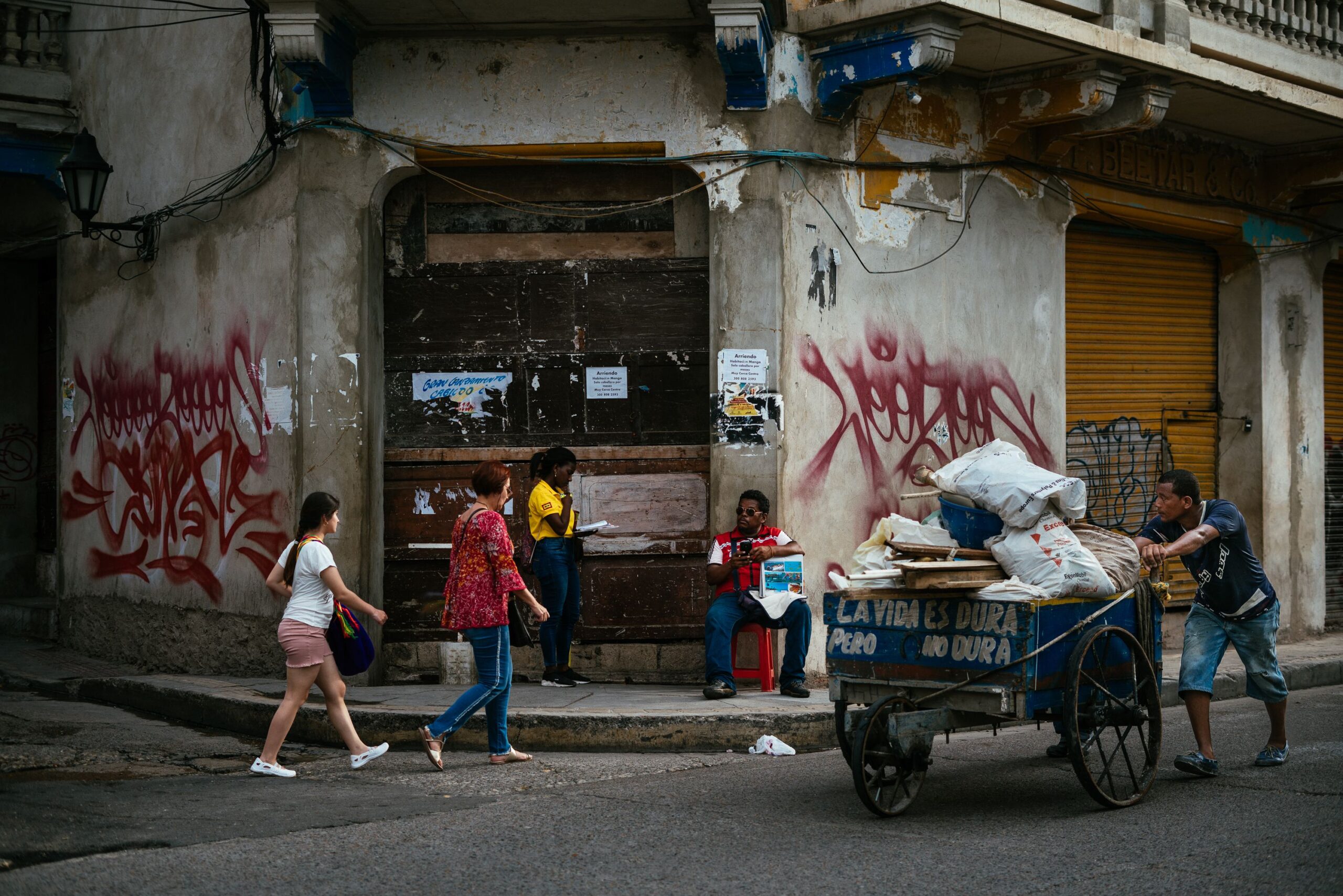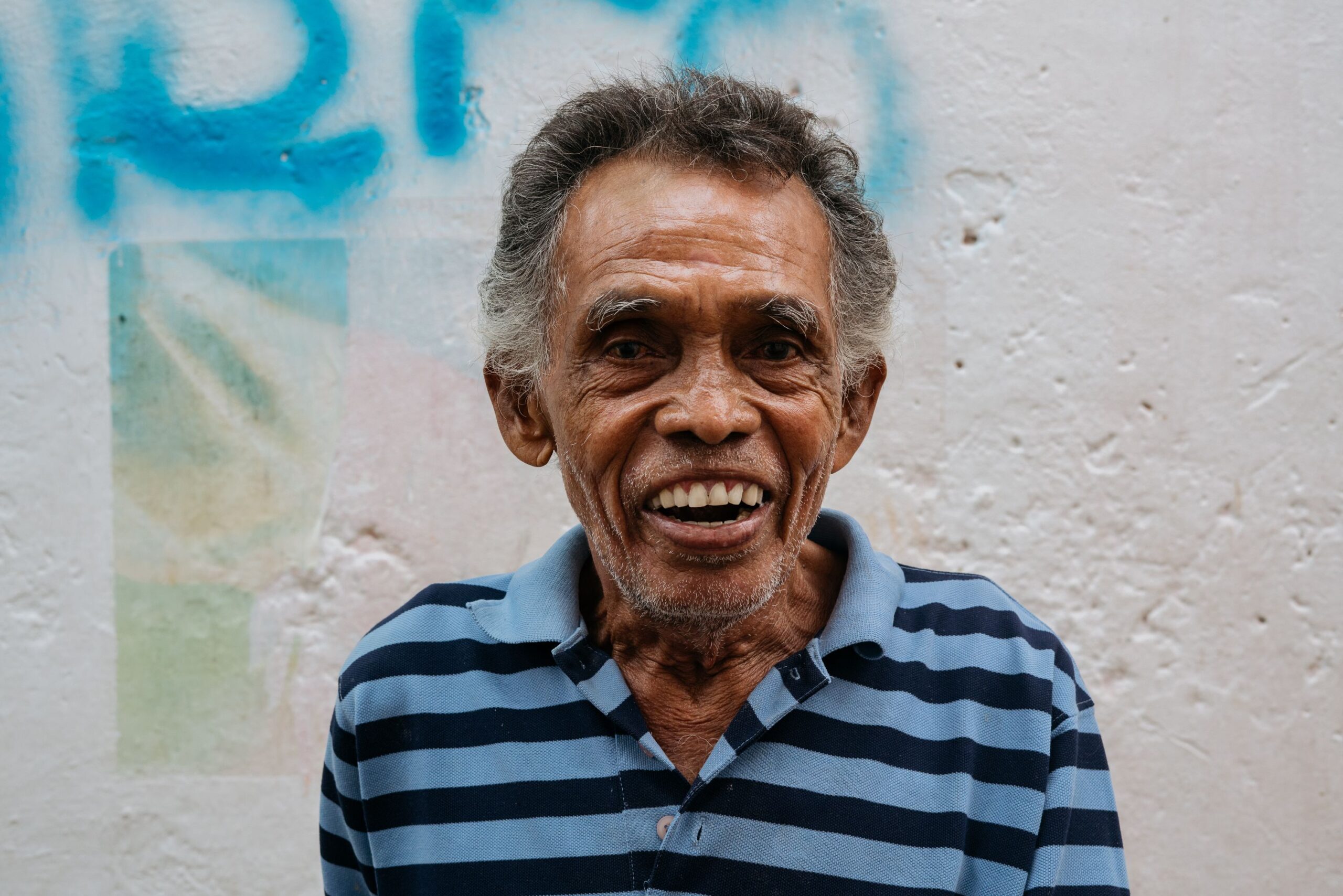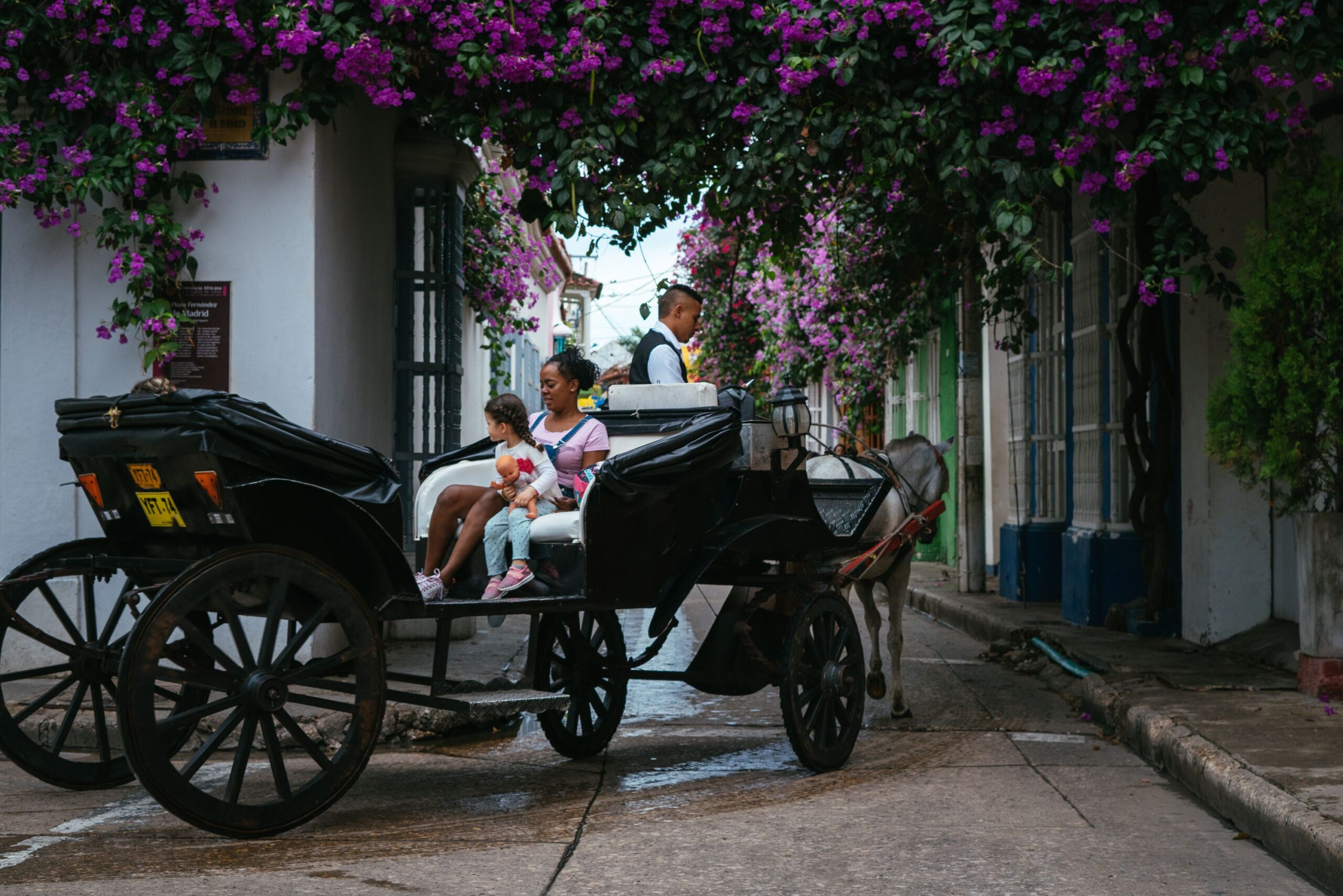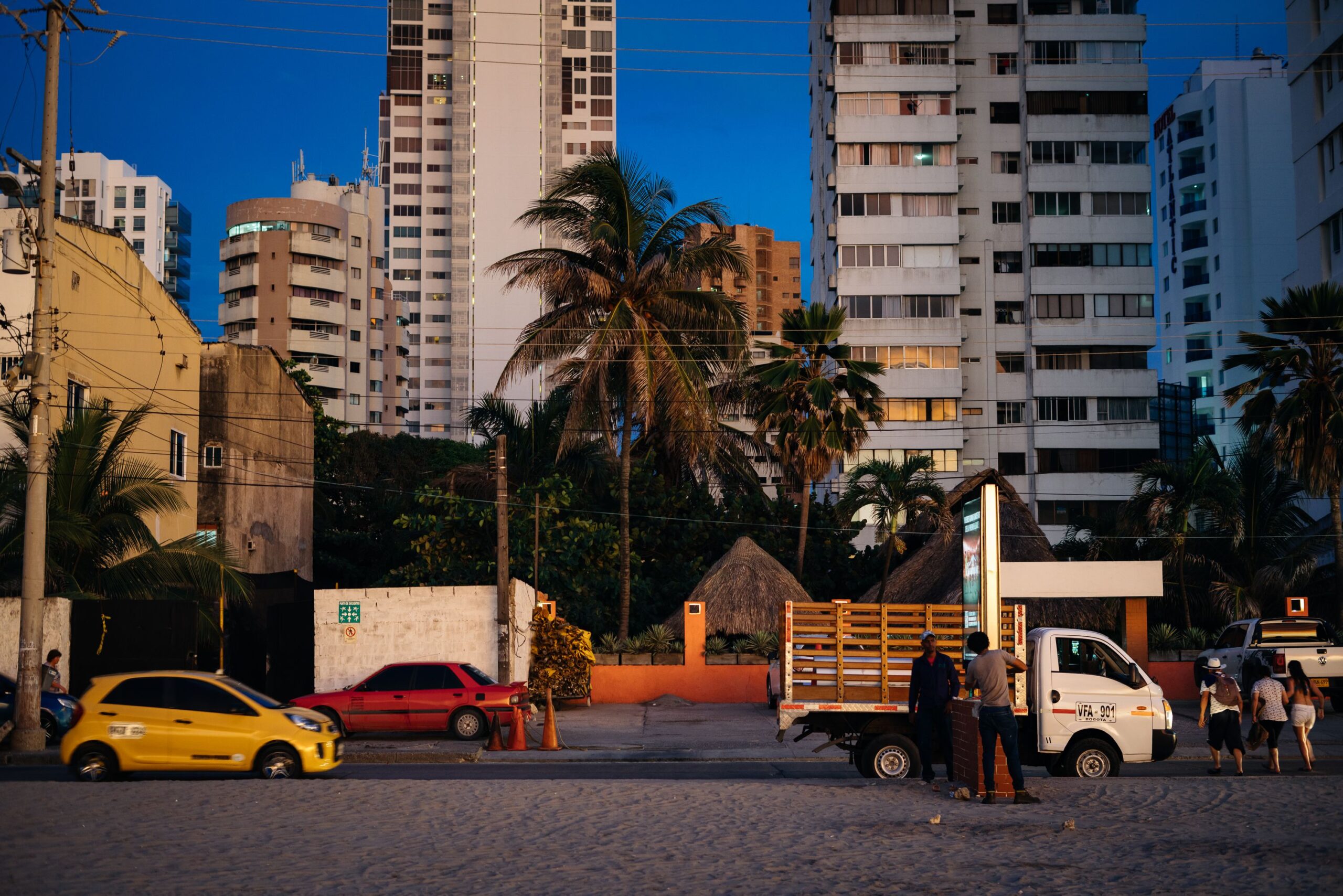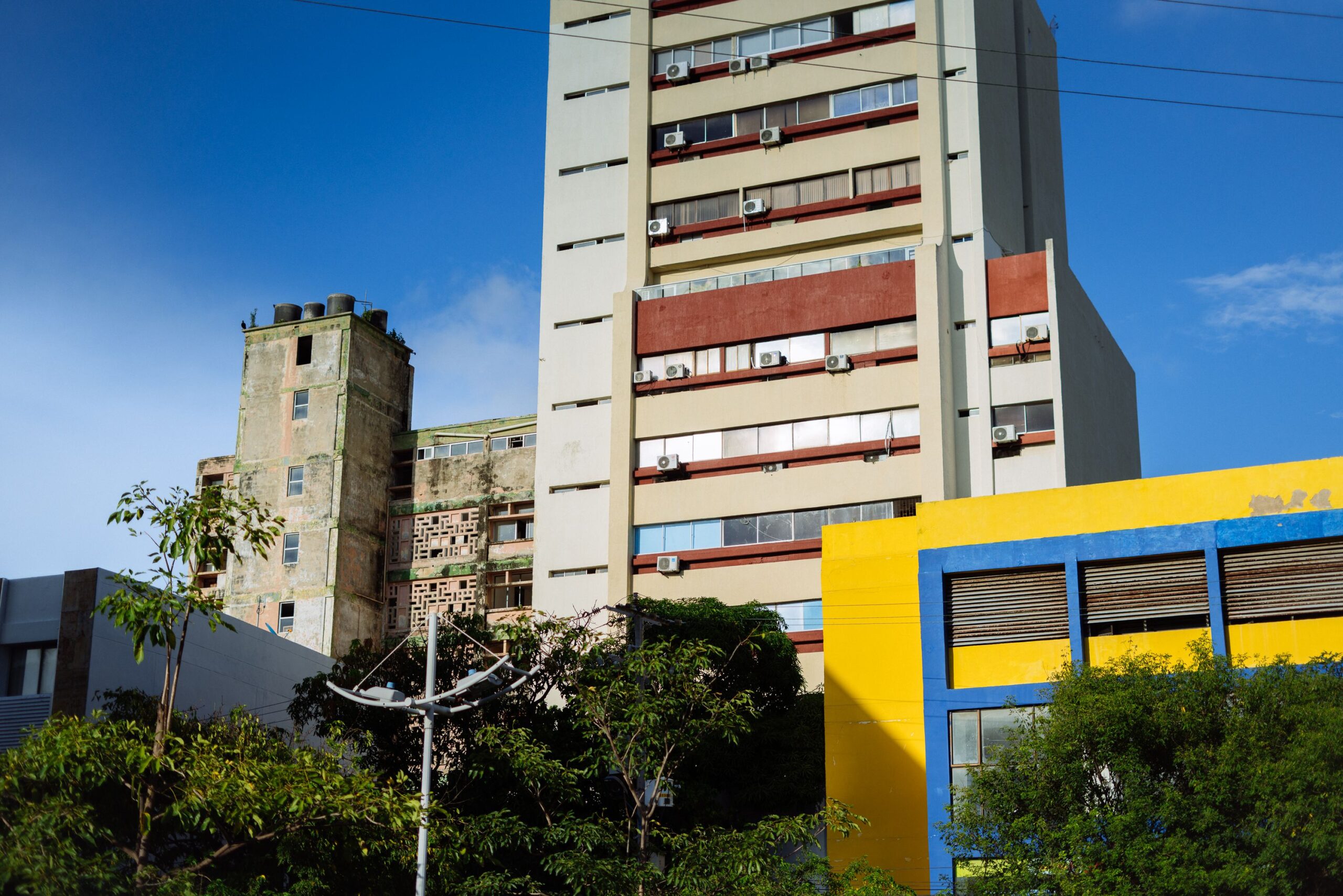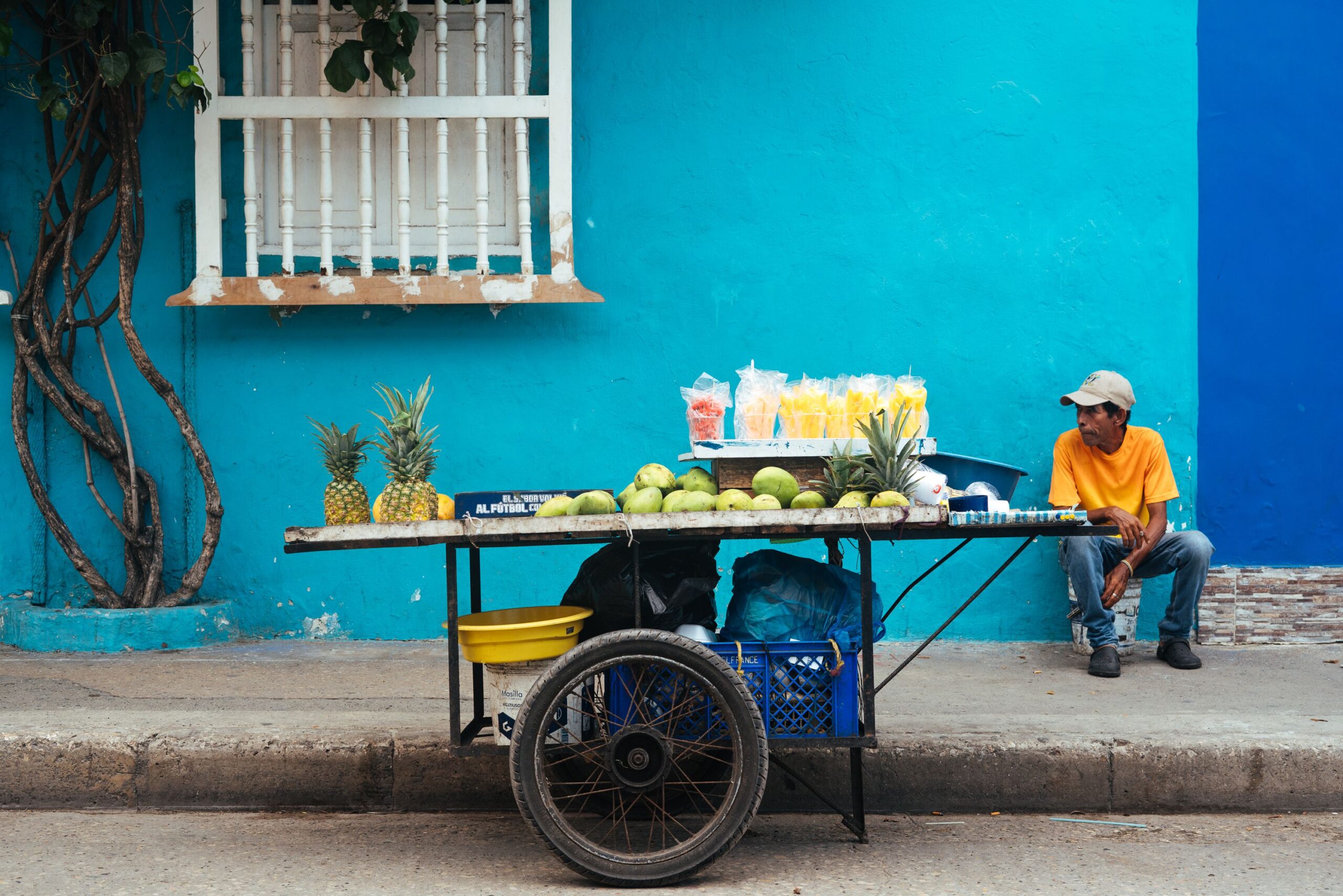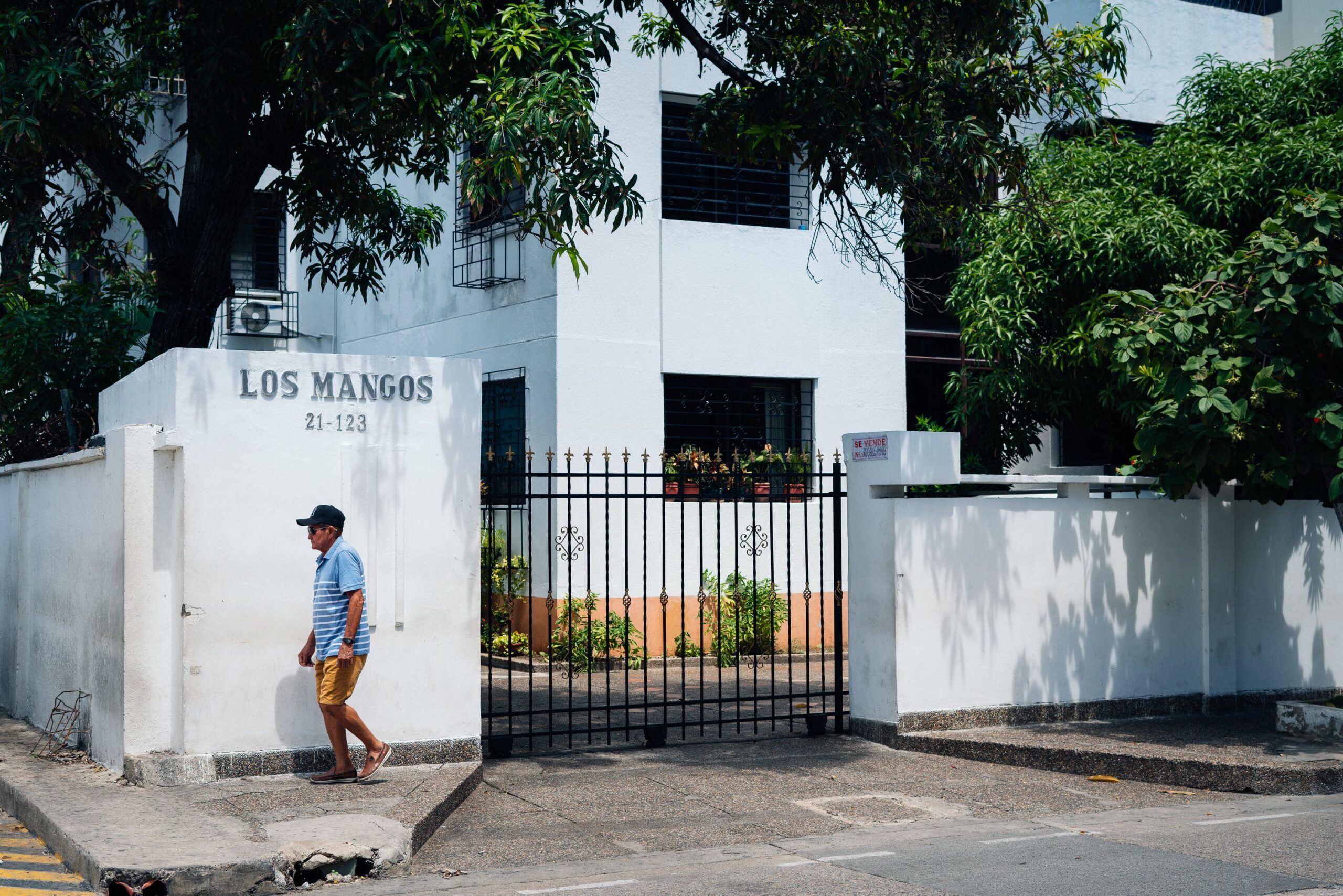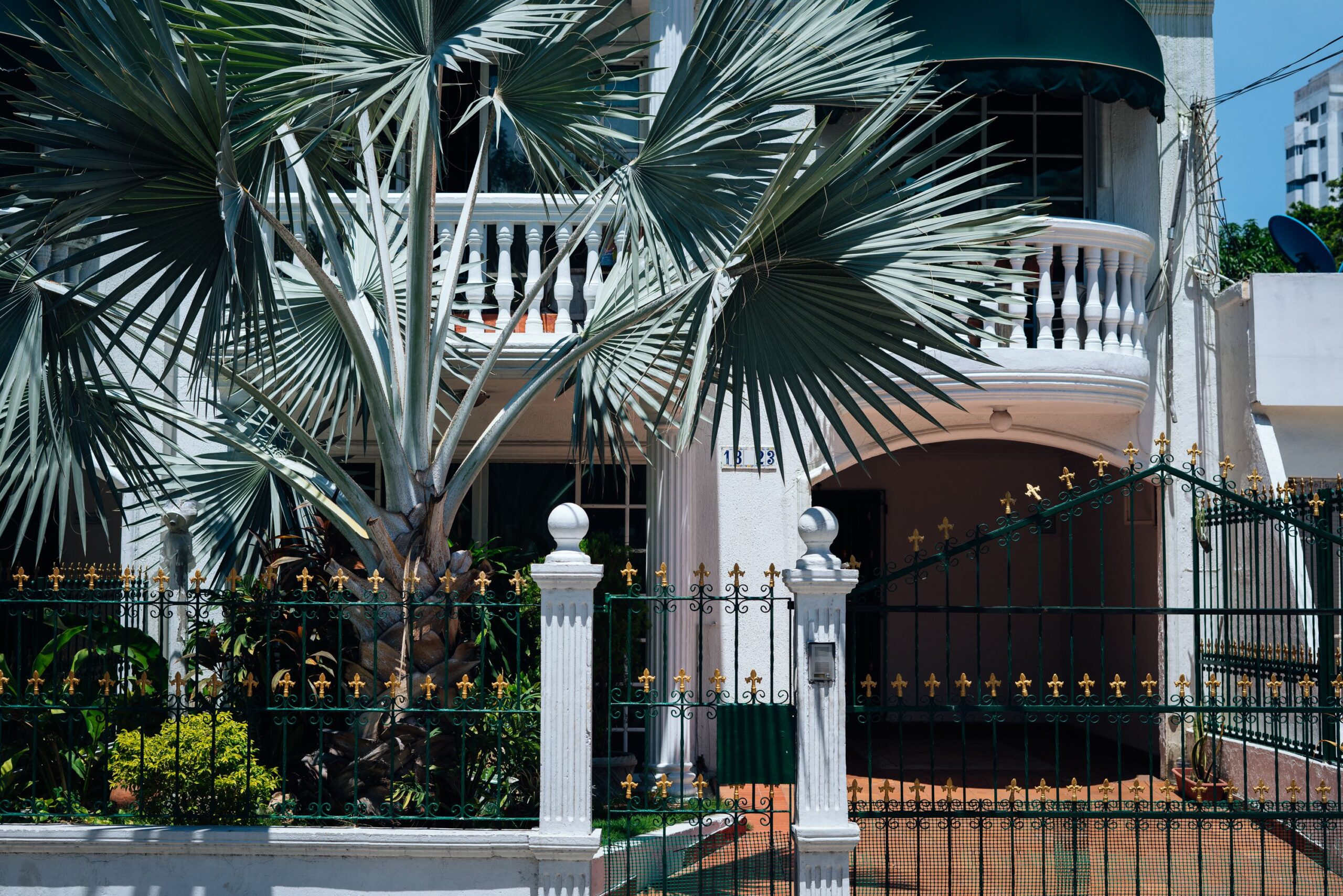Columbia Pt. I Cartagena
I embarked on an exhausting 36-hour bus journey from Nicaragua to Panama City, filled with anticipation and uncertainty about my next destination. As I pondered my options, the prospect of heading north to El Salvador seemed daunting, especially after my recent venture in Costa Rica to the south. Mexico, further north, held little interest for me at that moment, leaving me with the choice of either returning home or embarking on a more extensive journey southward.
As I sat in that luxurious beast of a bus, it felt more like a first-class flight than a terrestrial voyage. My seat, perched at the front of the double-decker, offered a bird’s-eye view of Nicaragua, Costa Rica, and ultimately, Panama. The landscape, especially as we crossed Costa Rica, was a revelation of breathtaking beauty. Regret gnawed at me for not exploring the southern reaches of Costa Rica. The view from that bus window was a tantalizing glimpse of what could have been.
In the midst of this journey, I found myself in the company of an American fellow traveler in the front seat. We shared stories and laughs, forging a brief but memorable connection. Little did I know that our paths would cross once more, unexpectedly, in the bustling streets of Medellin, two months down the road.
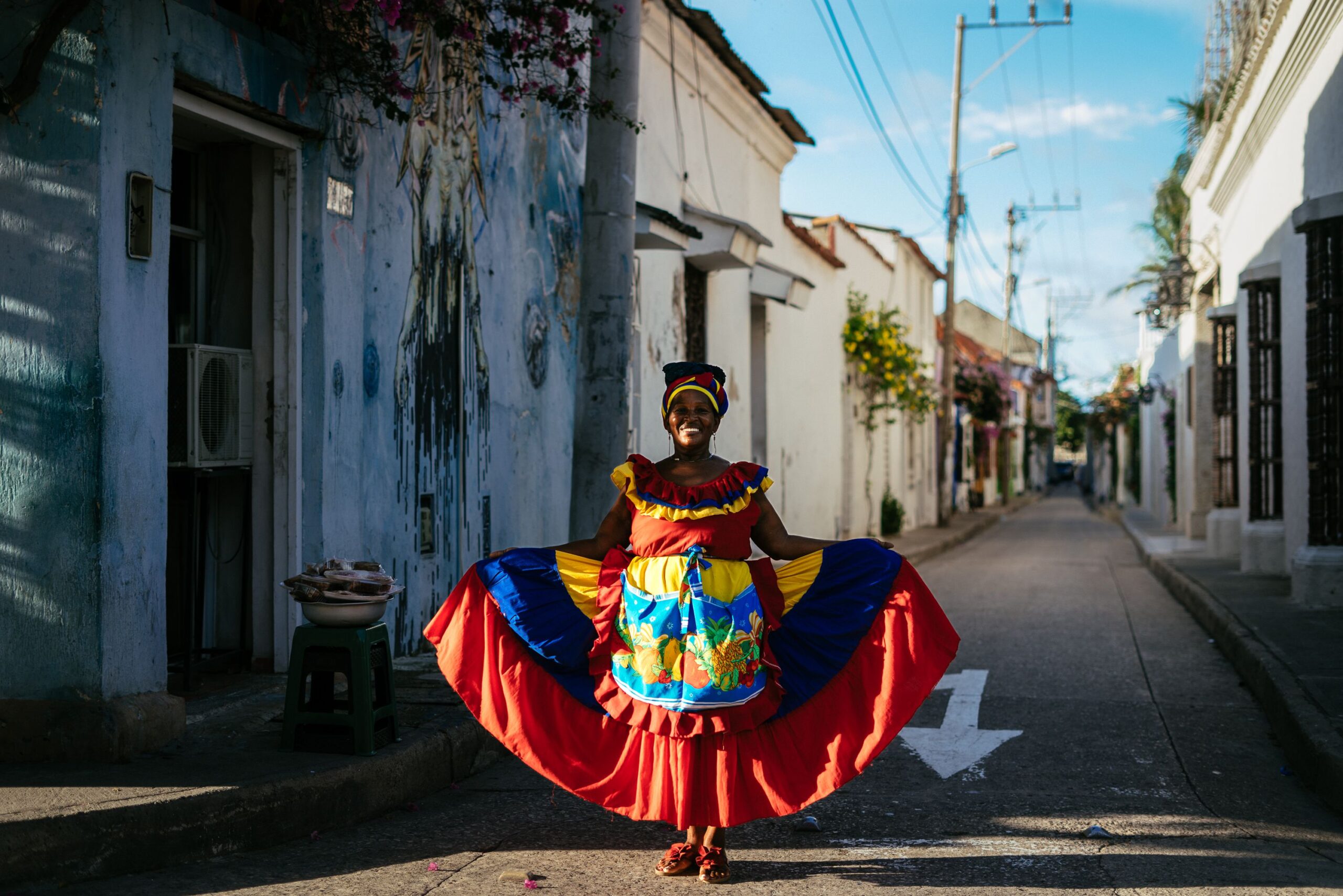
Traditional lady, Cartagena, Columbia
These ladies could be found all over the old town. They weren’t dressed in their indigenous clothes to do their daily chores, but rather pose with or for tourists to earn some money. I could photograph anyone but had to pay afterwards. I found this woman a bit off the main part of town, walking down a little side-street, adding a bit of authenticity to the photo, as there were no tourists groups in the background.
The Tayrona experience itself was nothing short of spectacular. The hike, spanning anywhere from two to four hours, transported me to the park’s heart—its pristine beaches, starlit nights in a tent, and breathtaking sunrises beckoning each new day. I ventured into the park twice, initially for a single day, only to realize the park’s immense allure and the necessity of witnessing both sunrise and sunset.
I vividly recall a sensational Spotify playlist accompanying my trek, elevating the experience to unparalleled heights. On my second visit, I ingeniously managed to smuggle some herb into the park, a precarious endeavor as bag searches greeted park entrants. My composure proved paramount as I navigated this challenge successfully. Once inside, the initial hour of hiking led me through lush jungle terrain before unveiling the pristine coastline, a trek that consumed an additional three to four hours. Frequent pit stops punctuated my journey, each revealing unique coves and majestic rock formations. Periodically, the path would wind back into the jungle, weaving through a verdant rainforest punctuated by towering palm trees. The park’s pièce de résistance consisted of two petite coves, culminating in a peninsula crowned by an enigmatic hut.
The sunset, regrettably, failed to dazzle, as a thick veil of clouds obscured the sun, casting its final rays over the distant ocean horizon. My dinner was a delectable sandwich from a beachside vendor, and I retired early in preparation for the imminent sunrise. With limited culinary options, I subsisted on a diet of sandwiches, cookies, and bananas.
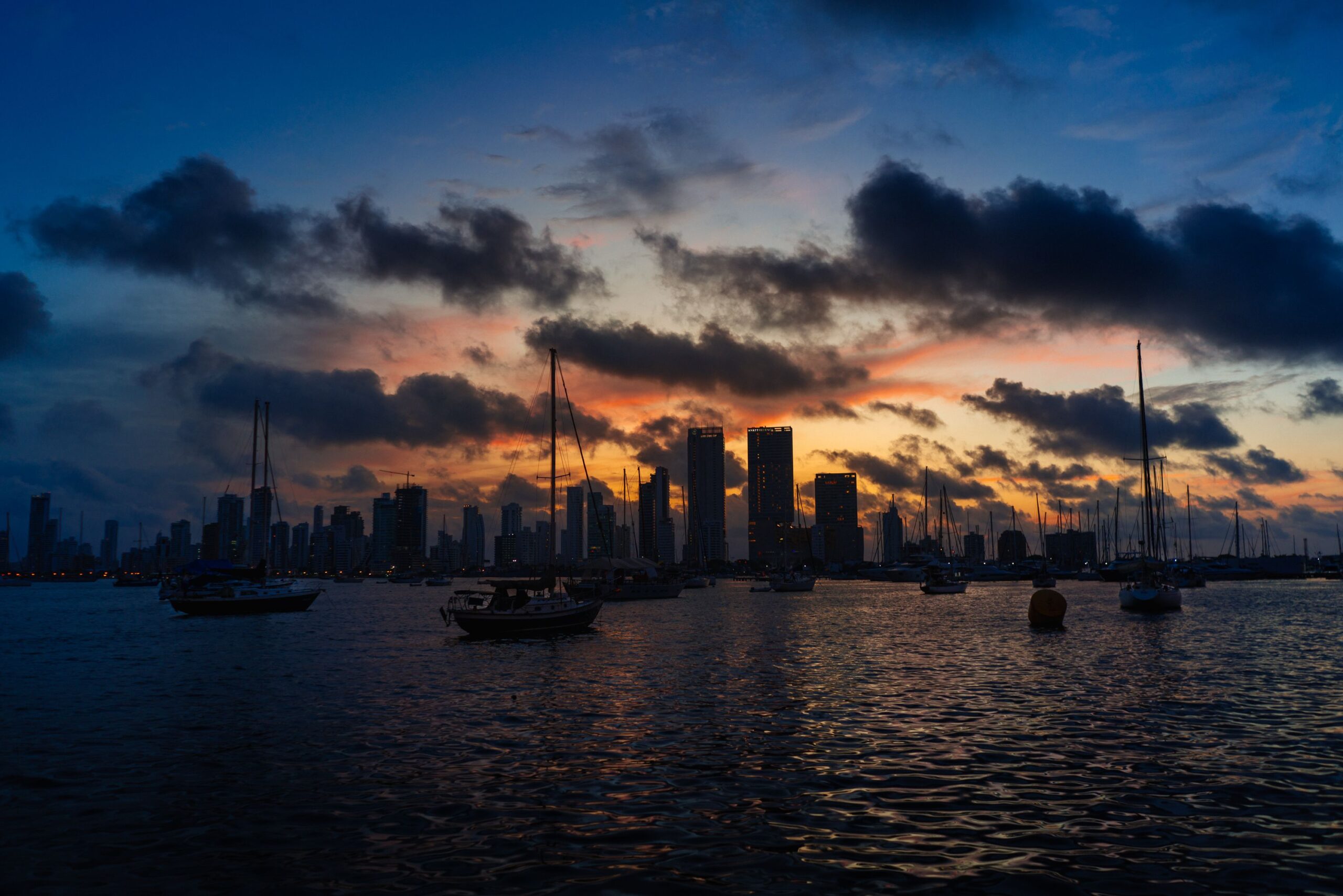
Skyline, Cartagena I, Columbia
Cartagena is one of the cities with a fancy skyline just by the ocean, very similar to Panama city. It is located on a peninsula and serves as the neighbourhood for the wealthier people of Cartagena. A lot of high-rise apartment buildings in-between colonial architecture style villas and older, smaller apartment buildings, which were still beautiful and added some character to the barrio. It was green, the sea was close as well as the harbour. Still, nothing too special in my opinion, neighbourhoods like these can be found all over the world with their American inspiration.
My initial plan in Panama City was straightforward: a pit stop to organize a boat trip through the enchanting San Blas Islands, en route to Colombia. Yet, the city’s first impression was far from comforting. The northern entry, near Albrook Mall, exposed me to a grim panorama of dilapidated buildings.
I couldn’t help but compare it to my earlier experiences in San Jose, Costa Rica, which was hardly a shining example of urban charm. Panama City seemed to wear an even darker visage.
As I navigated the city in a cab, the driver’s GPS revealed a forbidden red zone, an area I was advised to avoid. My first hour in this new city was off to a rather ominous start.
My quest for a boat to San Blas was riddled with twists and turns. A splendid navy-blue vessel, adorned with teak wood, initially caught my eye. It promised a touch of class that the typical white, soulless plastic boats couldn’t match. I contacted the captain, and all seemed well until, just a day before departure, he canceled due to a lack of passengers. He assured me they would set sail in another week. I begrudgingly agreed, resigning myself to more mall strolls and Cinnabon indulgence.
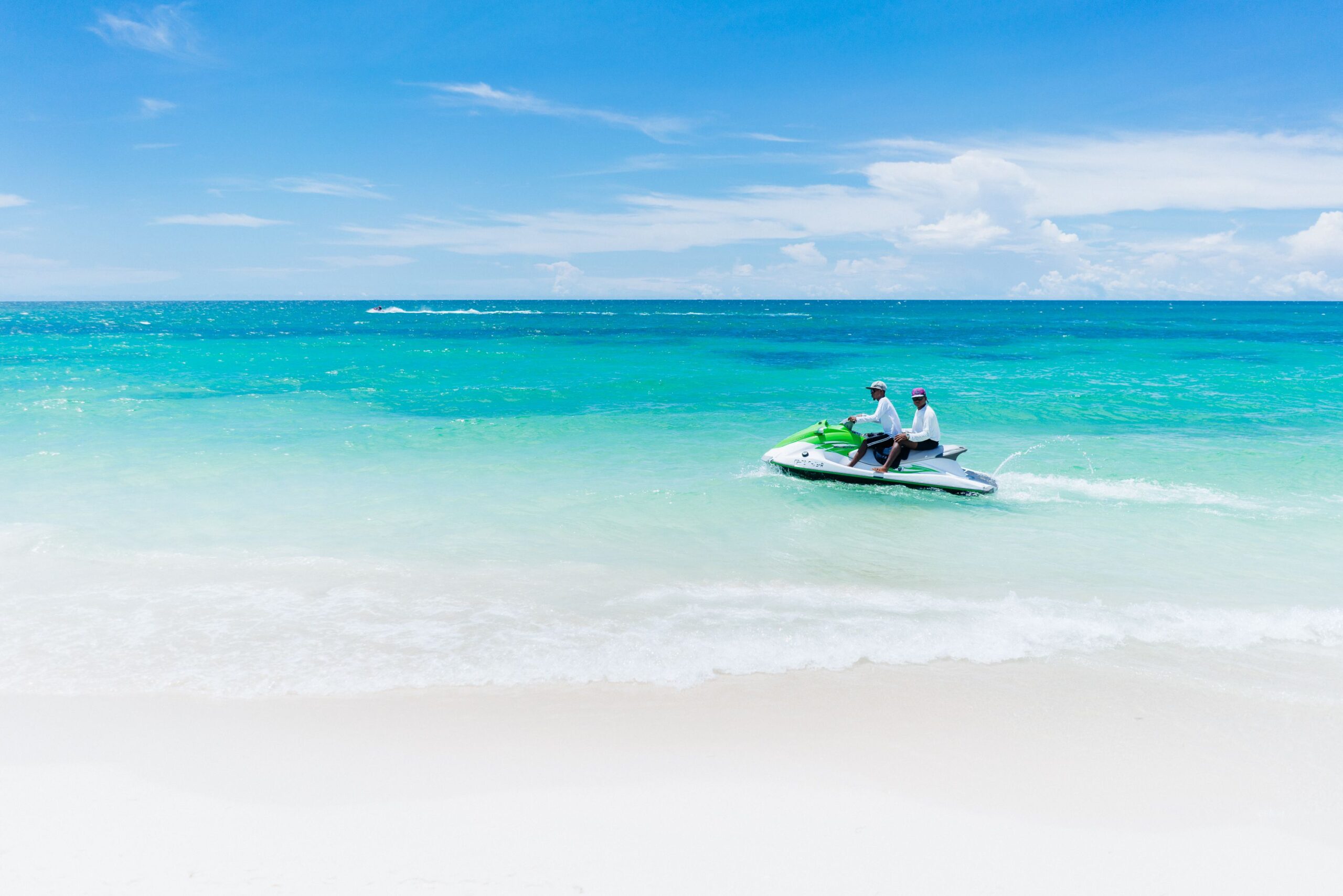
Isal Baru, Cartagena, Columbia
Technically this place could’ve been great, but it was just too busy. Beach clubs had been build all the way to the shore and there was very little space for the normal beach goer. All was geared towards the masses being brought in with a little boat from Cartagena. I walked along the beach to find a little space for myself, but as soon as the bach clubs ended, the sand did as well and the beach turned into swampy mangroves.
The journey, lasting four nights and five days, concluded with a somewhat uneventful crossing to Colombia. While advertised as a sailing trip, it felt more like a motorized jaunt. Upon arriving in Cartagena, the ritual of immigration and the urge to document the adventure on Instagram ensued. I, however, sought solitude, relieved to finally set foot on solid ground.
Cartagena proved to be a revelation. Despite its initial resemblance to Panama City, with its towering skyline by the sea, the vibes were a world apart. For tourists, the captivating districts were primarily Getsemani and the old town. The latter exuded polished charm, catering to traditional tourists, while Getsemani possessed a rugged, hipster allure. My quest for a bit of bud, to ease into my newfound comfort, was surprisingly swift in Cartagena. I lodged in a family-operated hotel, a slight distance from the tourist hub, connected by a treacherous neighborhood that tested my resolve late at night.
My request for a discreet smoke led to an amusing backyard episode, resulting in a stern hotel sign condemning marijuana use due to incessant complaints from the neighbors. Quick, covert walks through the sketchy neighborhood became my ritual. I found another discreet spot on the old city wall, near Juan Valdez (Colombia’s answer to Starbucks). However, the ever-watchful eyes of the police required constant vigilance.
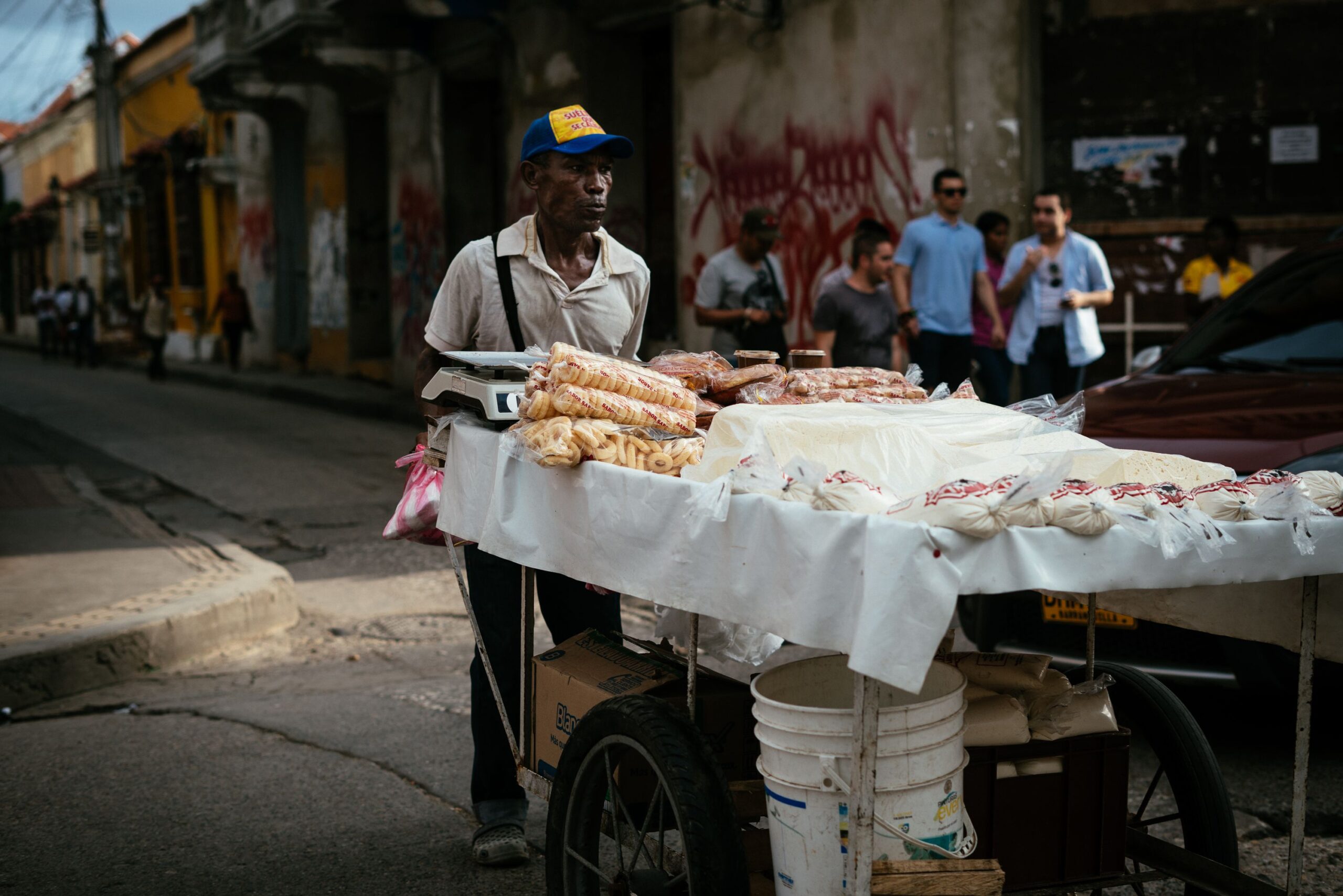
Men with cart, Cartagena, Columbia
People in Central America still have a chance to create their own businesses. Compared to this part of the word, where the self-employed man is going extinct and people choose to work for big companies instead, it feels like everyone has their own little cart business. Those people sell anything from drinks and snacks to mobile accessories to more serious foods and clothes. There was a stall for everything and all the daily needs could be taken care of through theses vendors.
In Cartagena, I savored moments lounging in touristy quarters, capturing the vibrant scenes through my camera lens.
Cappuccinos at the Colombian Starbucks, exploratory boat trips to Caribbean islands, and indulgence at select restaurants filled my days. Though the postcard-perfect beach had its charms, the relentless commercialization left me wanting. The tranquility I sought eluded me amid the cacophony of motorized beach activities.
In the end, Cartagena offered a welcome respite from the frenetic journey through Panama and the San Blas Islands. It was a city that revealed its soul to those who dared to look beyond the initial façade.

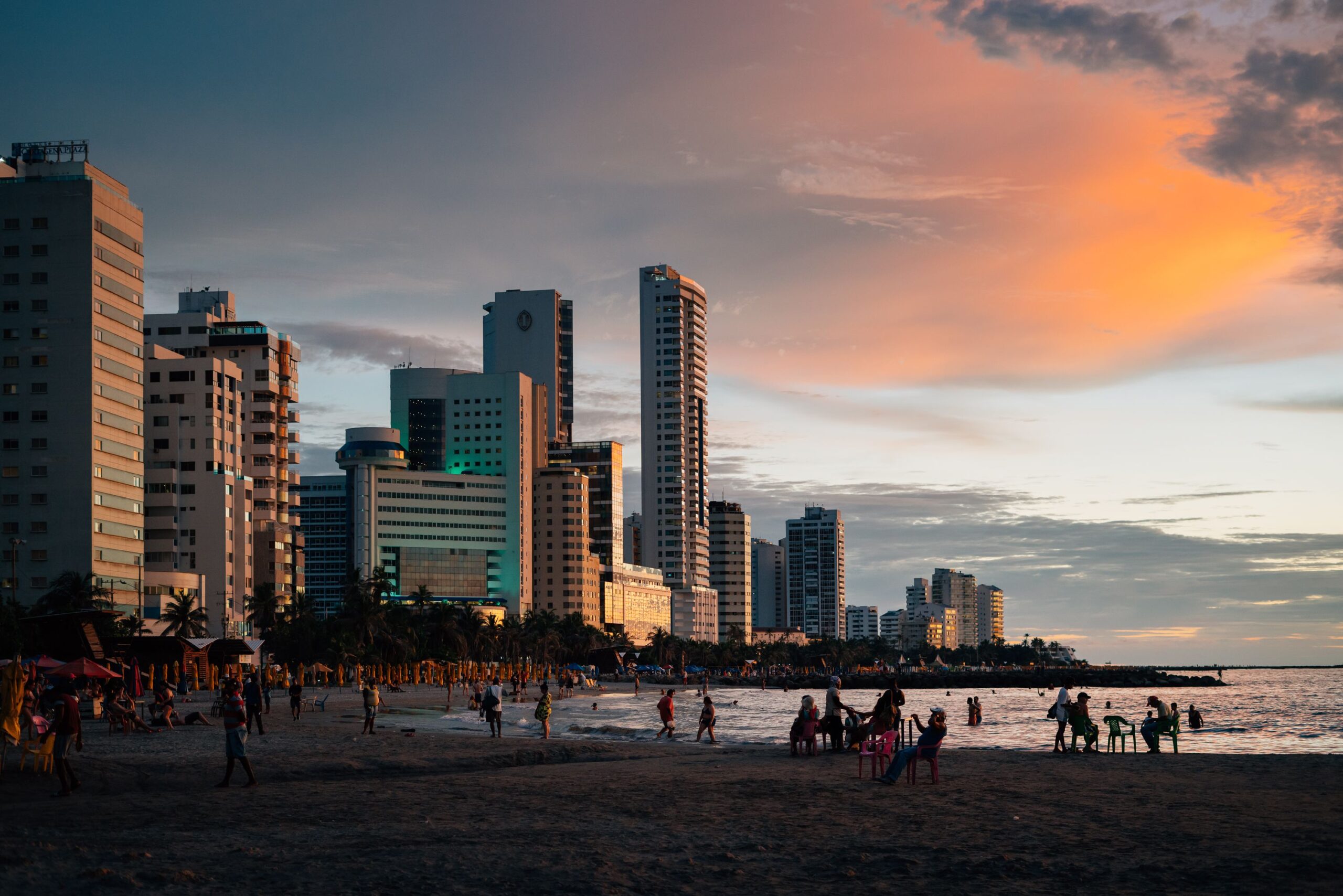
Skyline II, Cartagena, Columbia
Another perspective of Cartagena’s skyline, this time taken from the beach. The day I visited might’ve been a Sunday, the beach was packed with Columbian families finishing off their weekends. Sunday is another day of drinking with the family in Central America, unlike in the Western world, where it is more of an Friday and Saturday thing.

